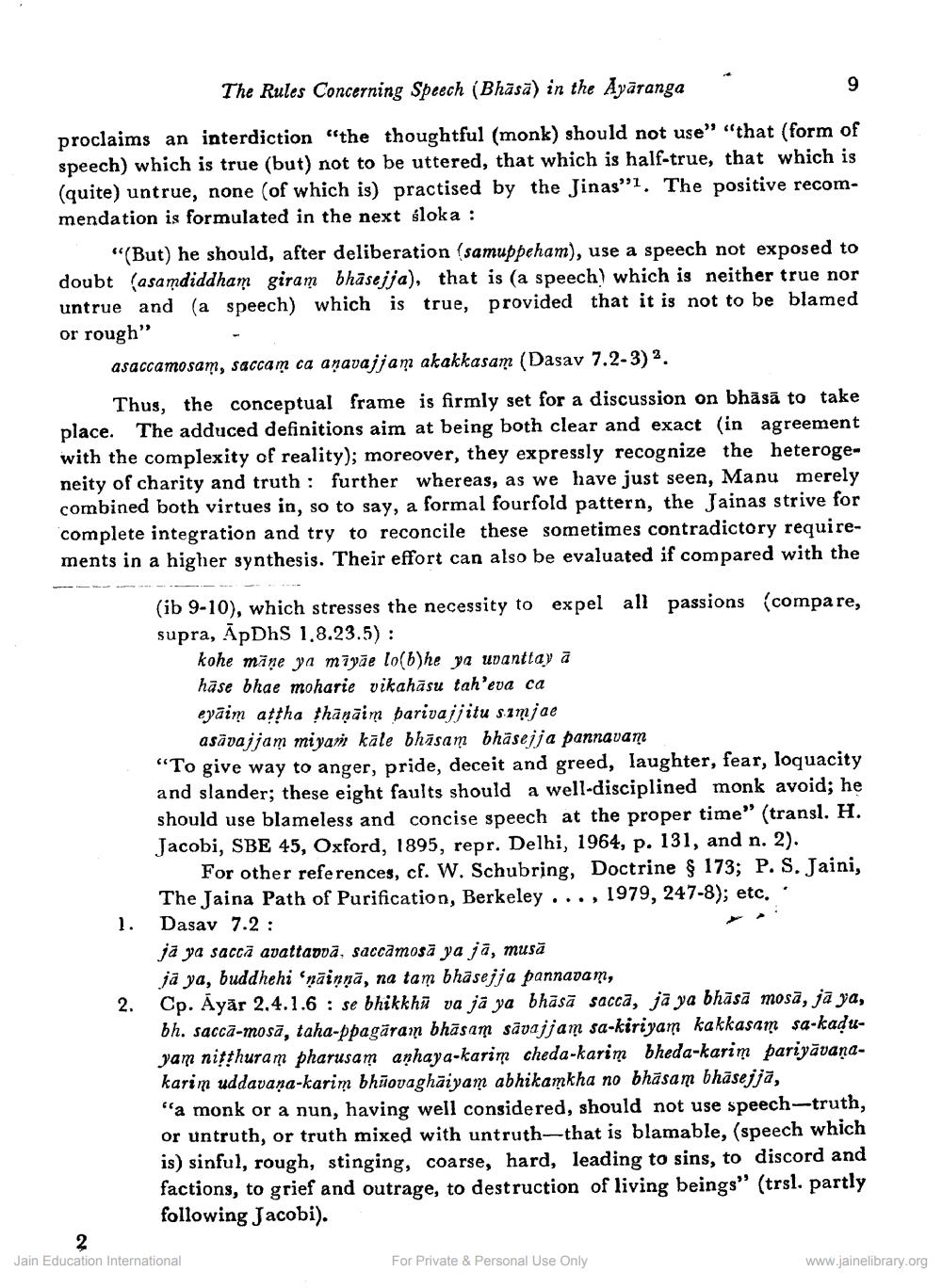________________
The Rules Concerning Speech (Bhasa) in the Ayäranga
proclaims an interdiction "the thoughtful (monk) should not use" "that (form of speech) which is true (but) not to be uttered, that which is half-true, that which is (quite) untrue, none (of which is) practised by the Jinas". The positive recommendation is formulated in the next sloka :
"(But) he should, after deliberation (samuppeham), use a speech not exposed to doubt (asamdiddham giram bhäsejja), that is (a speech) which is neither true nor untrue and (a speech) which is true, provided that it is not to be blamed or rough"
asaccamosam, saccam ca anavajjam akakkasam (Dasav 7.2-3)2.
Thus, the conceptual frame is firmly set for a discussion on bhāsā to take place. The adduced definitions aim at being both clear and exact (in agreement with the complexity of reality); moreover, they expressly recognize the heterogeneity of charity and truth: further whereas, as we have just seen, Manu merely combined both virtues in, so to say, a formal fourfold pattern, the Jainas strive for complete integration and try to reconcile these sometimes contradictory requirements in a higher synthesis. Their effort can also be evaluated if compared with the
9
2.
(ib 9-10), which stresses the necessity to expel all passions (compare, supra, ApDhS 1.8.23.5):
kohe mine ya miyae lo(b)he ya uvantlay a
hase bhae moharie vikahāsu tah'eva ca
eyaim attha thanaim barivajjitu samjae
asavajjam miya kale bhasam bhāsejja pannavam
"To give way to anger, pride, deceit and greed, laughter, fear, loquacity and slander; these eight faults should a well-disciplined monk avoid; he should use blameless and concise speech at the proper time" (transl. H. Jacobi, SBE 45, Oxford, 1895, repr. Delhi, 1964, p. 131, and n. 2).
For other references, cf. W. Schubring, Doctrine § 173; P. S. Jaini, The Jaina Path of Purification, Berkeley ..., 1979, 247-8); etc. 1. Dasav 7.2:
2
Jain Education International
ja ya sacca avattavva, saccamosa ya jā, musā
ja ya, buddhehi päinga, na tam bhasejja pannavam,
Cp. Ayar 2.4.1.6: se bhikkhi va ja ya bhasa sacca, ja ya bhāsā mosā, ja ya, bh. sacca-mosa, taha-ppagaram bhasam savajjam sa-kiriyam kakkasam sa-kaḍuyam nifthuram pharusam anhaya-karim cheda-karim bheda-karim pariyavanakarim uddavana-karim bhiovaghaiyam abhikamkha no bhasam bhäsejja, "a monk or a nun, having well considered, should not use speech-truth, or untruth, or truth mixed with untruth-that is blamable, (speech which is) sinful, rough, stinging, coarse, hard, leading to sins, to discord and factions, to grief and outrage, to destruction of living beings" (trsl. partly following Jacobi).
For Private & Personal Use Only
www.jainelibrary.org




